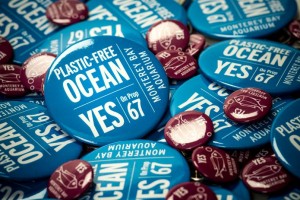I grew up in a rural area of southern Maine with some of the highest food insecurity rates in the state – nearly 70% of the students at my elementary school qualified for free and reduced lunches. When I was in middle school, a well-intentioned professor from UMass Boston was awarded a USDA Community Food Project grant to build a beautiful, $65,000 greenhouse right outside our school. We had gardening classes. Produce from the greenhouse even made its way into our cafeteria’s brand-new “Garden Bar.”
 Pictured above: Three of my 7th grade classmates prepare to trellis pea plants during gardening class in our newly constructed greenhouse. April, 2009.
Pictured above: Three of my 7th grade classmates prepare to trellis pea plants during gardening class in our newly constructed greenhouse. April, 2009.
That professor from Boston really made a difference in our school district. He established a total of 5 school gardens and founded Rippling Waters Organic Farm. He hired local high school students, including my sister, to work on the farm each summer and to learn about food justice. He brought younger students together in the greenhouse, building connections and friendships while trellising peas. After a day of learning on the farm or in the greenhouse, students brought home not just vegetables, but stories, friendships, and enthusiasm that we eagerly shared with our parents. But the project wasn’t sustainable; the professor couldn’t keep it going all on his own.
After going unfunded during the next round of USDA grants and sinking tens of thousands of dollars annually into a farm that the community never fully embraced, the professor sold Rippling Waters. He tried to pass the school garden programs on to a successor, but nobody stepped up. Today, the $65,000 greenhouse and our cafeteria “Garden Bar” stand empty and abandoned, and our school district is left hungry for more than just food.
Stories like this one are pretty common in rural America. Food justice projects in cities far outnumber those in rural areas, despite the fact that a full three quarters of America’s hungriest counties are rural. On the rare occasion that a passionate urban food justice activist ventures out into a rural community, they usually bring their urban strategies with them: starting up an entirely new farm, garden, or greenhouse, employing local youth to increase civic engagement, and distributing the produce to local schools and elders.
Yet strategies that have succeeded in an urban context wither and die in rural communities like mine. Rural residents are dispersed miles away from each other, internet access and cell service can be spotty, and projects rarely get enough community buy-in. When transplanted urban activists eventually burn out – they usually do – locals are hesitant to take over their new farms and gardens. While hungry rural communities do need to fight for food justice, they don’t need new fields to tend.
Hunger in rural America won’t be solved with a farm.
That’s why we struggled to find the time, funds, and motivation to take over initiatives like Rippling Waters Organic Farm. It is also why we need to step up to redefine food justice for our rural context.
In that sense, homegrown rural food justice initiatives will stand apart from urban movements. They’ll be about feeding our community not by starting a new farm, but by forming new connections, changing the way we distribute food and our attitudes towards food aid, and empowering individuals to revitalize our local economies.
But we still can (and should) take one or two lessons from successful urban food activism. In the city, farming projects don’t necessarily feed that many people; their most profound impact is providing a designated space where community comes together, adding a bit of green vibrancy back into the grey concrete jungle, and drawing attention to the community’s relationship with food and hunger. Rural communities could use a lot more of that kind of civic engagement and community awareness in their own food justice projects.
So let’s build a community center instead of another farm. Let’s invest in job training and adult education. Let’s not just send our kids out to do farm chores, but teach them about their role in a powerful movement to feed themselves and their neighbors. Let’s actually talk to each other about our common challenges, and overcome the stigma of accepting a little help. Let’s restock that “Garden Bar” with produce from the farms we already have, and let’s celebrate the fact that our community members can provide for each other.
Rural America is hungry for more than just food, so let’s reimagine a rural food justice movement that nourishes our communities as well as our bodies.

























